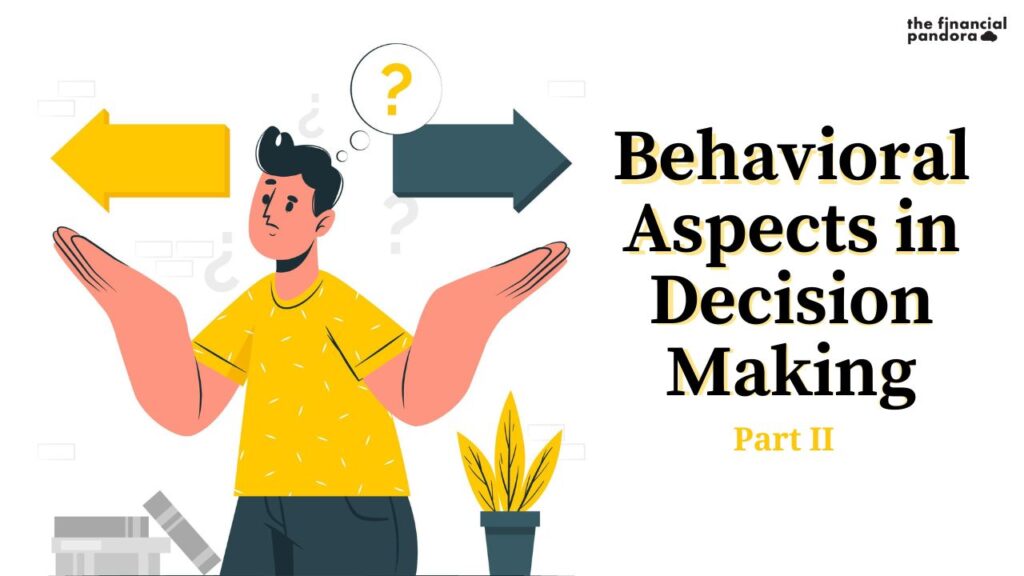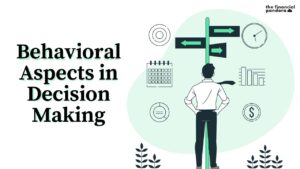Click here for Part 1
Most heuristics that we apply, while beneficial for a quick decision are not fool-proof. There is a series of such flaws in the way we think while making decisions, some maybe linked to the heuristic, some to the form of biases predominating within our minds and others are just irrational anomalies in our thinking.
These fallacies or traps are made even more dangerous due to our inability to see them. These traps tend to be hardwired into our thinking process; we fail to recognize them even as we fall into them. To ensure a successful product or service development or implementation, avoiding these traps in their daily decision-making is the key for executives.
Types of Traps
1. Anchoring Trap – This trap occurs when people rely too much on pre-existing information or the first information they find when making decisions. This information takes precedence over any subsequent findings as it, in its most literal sense, sits still like an anchor in our minds. As anchors can establish the terms that will affect decisions, savvy negotiators often use them as a bargaining tactic by confirming the anchored information in the user’s mind.
E.g., If I were to show you two articles, let us say a shirt, the first shirt is priced at Rs. 15000. The second one at Rs. 5000, your mind would automatically consider the second shirt as cheap as it has the benchmark of the price of the first shirt. Instead, if I had just shown you the second shirt worth INR 5000 would probably have been considered an expensive shirt.
2. Status Quo Trap – This trap occurs when people tend to maintain things as they are even when they know they are less than optimal. The trap tends to happen as sticking to the status quo or the well-established principle is perceived as less risky than transforming any practice, which could not be further from the truth. It also might occur when moving something away from the status quo requires additional efforts that the team or members want to avoid.
E.g., Sticking with your current network provider is another example of how the status quo bias may influence everyday decisions. Even though another provider might offer more data at a lower price, you are already familiar with the rates, choices, and customer service offered by your current provider.
3. Sunk Cost Trap – This trap occurs when our deep-seated bias pushes us to make choices in a way that affirms or justifies our past choices, even when they are no longer valid. Our past decisions become the sunk cost, and we pour in extra efforts to try to turn them around. This problem is often compounded in the business sense as any action taken is extremely public and would be adjudged as an admission to a poor decision in the past.
E.g., An employer may waste a lot of time improving a poorly performing employee when it would be much better to fire them and employ another person. However, firing the employee would be a public acceptance of a mistake; hence most employers continue trying with the employee who only goes on to further compound the problems.
4. Confirming Evidence Trap – This trap leads us to seek information that supports our existing instinct or point of view while avoiding information that contradicts it. Two items are at work here a) Our tendency to decide what we want to do before we understand why and b) Our preference for items that we like over those we don’t like.
E.g., Suppose a consumer believes that a particular shampoo brand is better than the other brands, then despite being provided with a list of facts supporting the conclusion that the other shampoo causes more harm than good. In that case, he will only affirm those points that prove it is worse than the one he is using currently.
5. Framing Trap – This trap tends to occur when the question of which problem needs to be solved is incorrect. However, businesses could use this framing trap cleverly to ensure that their sales grow.
E.g., If a newspaper company had the following rates, which one would you prefer:
Online Only – Rs.79
Physical Only – Rs.99
Online + Physical – Rs. 99
Our mind would automatically choose option ‘c’, although if you are from a younger generation, you would most likely use it online only. A person from an older generation, too, would mostly prefer reading the physical copy despite the content in both mediums being the same. However, the company has already derived Rs. 20 more sales from a large part of the masses.
6. Estimating and Forecasting Trap – Last of the famous traps but by no means the least, is the estimation trap. The estimating and forecasting trap can be further divided into overconfidence, prudence, and recall ability traps. The first is when businesses tend to be overconfident with their estimation and show a much higher cash flow than can be generated by the asset, affecting financing choices. Prudence trap underestimates the cash flows that can be generated by the asset, again making it sub-optimal to financing decisions. The recall ability trap occurs when we are neither over-confident nor overly prudent. It occurs when our estimates are based on a past trend or an event that may reflect our forecasting.
Methods of Overcoming Traps
While we have finally understood all these traps, Businesses can use various methods to avoid most of these traps. A select few of these are mentioned below:
1. Be open-minded – Diversity and open-mindedness can ensure that the solution or the decision taken avoids various traps like status quo or sunk cost.
2. Hear out solutions – When discussing a problem, ensure that the first step is to hear other people’s solutions rather than providing a solution to avoid anchoring.
3. Ideate with a person who was not part of the previous decision-making process and one that can play devil’s advocate, if need be, to avoid getting caught in a loop.
4. There could be various other solutions to the traps discussed above. We would love to hear about the times you have faced such situations and the solutions you undertook in the comments section of our post.
Follow Us @




